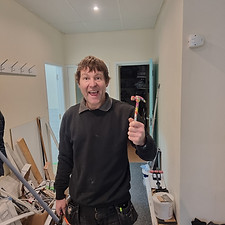
The services we provide
For examples of our work please go to the relevant page
Click the text to go to the relevant page
The manufactures we install


Our approvals relevant to MVHR
Who We Are
Artimus Renewables, based near Lincoln, is a family-operated business focused on renewable energy installations. We specialize in heat pumps, solar PV, wind turbines, and EV charging solutions while ensuring ethical operations and meeting client expectations. Our dedication to quality installations helps create a sustainable future.
Why choose Artimus?
Take a look at our Google reviews on our Reviews page and you’ll get a good idea of how happy our customers are.
We always ensure that the installation will perform as described and that you will have a solution that meets an agreed design. The solution might not be exactly what you initially thought you wanted – that's because we won't install a poor solution just to make you happy or line our pockets. We will install the right solution for your property and your budget.
We also only fit equipment that has reliable technical support and warranty cover. This means we might not be the cheapest quote you receive but you will definitely get long-term value for money with us.
Meet the team

Steve
Bossman, when he is allowed
.jpg)
Matt
Engineer, Fran and Steve's youngest of three children

Gren
Engineer, good friend of many years

Fran
Accounts, admin, on-site catering and keeping bossman in check

Ringo
Site security

Spong
Ringo's manager
Our posts
Instagram posts
Some questions answered
What is MVHR?
MVHR stands for Mechanical Ventilation and Heat Recovery
MVHR mechanical ventilation with heat recovery uses a heat exchanger to recover the heat contained in air extracted from your kitchen and bathrooms to warm fresh air entering the house – this is then ducted to the living areas and bedrooms. A good system is capable of recovering over 90% of heat from the extracted air, reducing the burden on the heating system. Also known as heat recovery ventilation, it also reduces damp and condensation in the connected rooms (e.g. bathrooms, kitchens and utility rooms) and can help allergy and asthma sufferers.

Rose cottage is a Victorian, solid wall, detached building with poor insulation on the walls. The insulation deficit will be remedied as the house is renovated. The issue with solid walls is they are cold and in the winter attract condensation. And what does wet wall encourage, mold? We had a significant issue with mold in certain areas of the upstairs rooms which was not cured unless the heating was increased to uncomfortable and very expensive levels.
After some research we decided to add MVHR to all of the upstairs rooms. Extraction is from both bathrooms and fresh, warmed air is pumped into the bedrooms. The effectiveness of the installation is surprising, the damp and mold has all but gone. The air flow in all rooms cannot be heard on the background trickle setting and only just audible when then boost is activated. This happens when someone enters either of the bathrooms and is timed. The heating is also set to a realistic level both for comport and cost.
More advanced MVHR units than the one we fitted have humidistats which trigger a higher flow rate when the relative humidity in the extracted air exceeds a set value. The one at Rose cottage uses PIRs int he bathrooms to trigger the increase flow rate.
The problem of damp is not just limited to older properties. As buildings are improved and renovated the natural air leakage of the property is reduced which can lead to an increase in humidity. So mold and poor air quality is not just limited to older properties.









































































